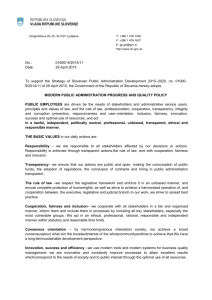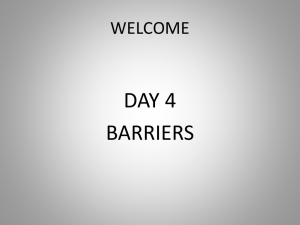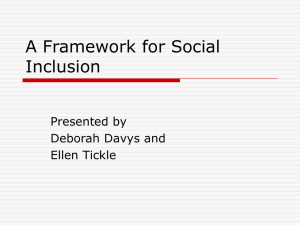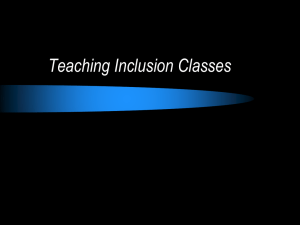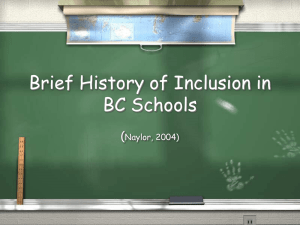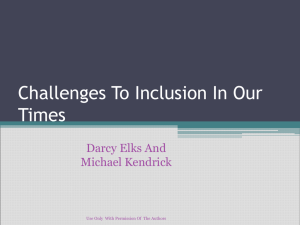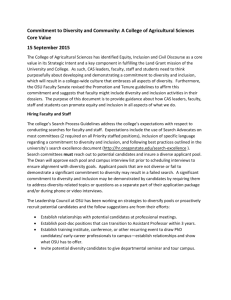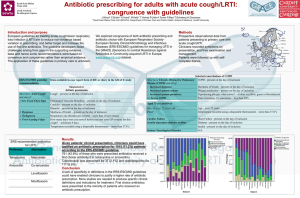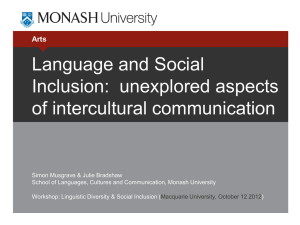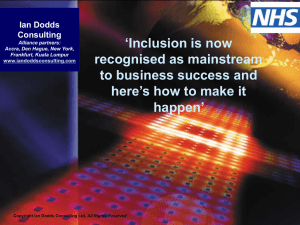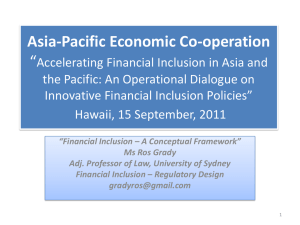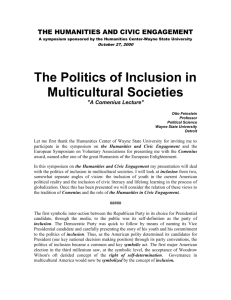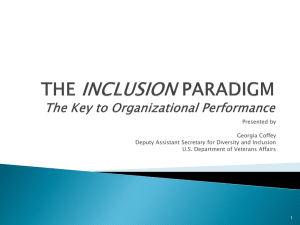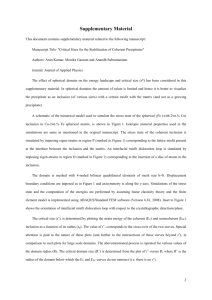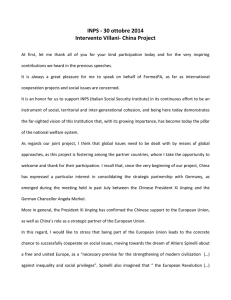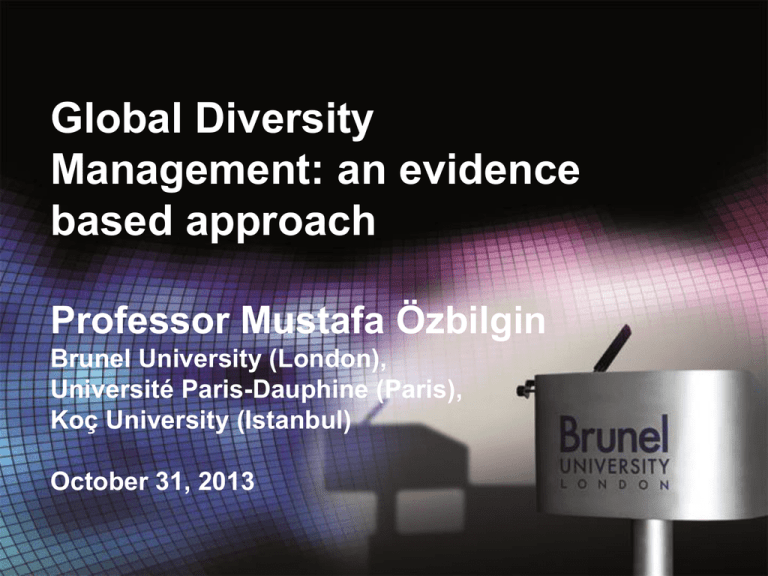
Global Diversity
Management: an evidence
based approach
Professor Mustafa Özbilgin
Brunel University (London),
Université Paris-Dauphine (Paris),
Koç University (Istanbul)
October 31, 2013
Etic Dimensions of Diversity
Sex and gender
Nationality
Disability
Class
Ethnicity
Partnership status
Sexual orientation
Parental status
Age
TU membership
Belief and religion Criminal convictions
Health
Job role
Seniority
Appearance
Ideology
Weight
Postcode
Accent
…
Emic framing of diversity
Who are the
holders of
power?
What are
their
resources?
What are the
common
attributes of
the
powerful?
What are
institutional
mechanisms
that privilege
them?
Tatli, A. and Ozbilgin MF (in press) An emic approach to intersectional study of diversity
at work: A Bourdieuan framing, International Journal of Management Reviews.
How do
acquisition of
power and
attributes of
powerful
interplay?
Past
Present
Future
Models for Global Diversity and Change
2. The Process Model of Diversity Management
Leadership &
Cultural
Foundations
Diversity Management
Diversity-Related
Organizational
Outcomes
Inclusion of Units
· Seeking & using global input for decisions that affect global units
· Building trusting & collaborative relationships across global units
Organizational
Leaders
· Beliefs &
attitudes
· Demographics
· Cultural IQ
· Prior int’l
experience
· Interpersonal
relations in TMT
Flexibility of Human Resource Management
· Deriving an emic understanding of local context
· Designing & implementing culturally-consistent management
policies, practices and procedures
Diversity Definitions & Practices
· Definitions of diversity sensitive to cultural context
· Unifying organizational diversity initiatives encourage inclusion,
but allow flexibility for local programs; global accountability
· Local targets for alleviating workforce discrimination
· Recognizing local repercussions of protecting target groups
(e.g., gender, religion)
· Local director of diversity programs
Organizational
Culture
· Multicultural
vs. monolithic
· Openness to
change &
continuous
improvement
Knowledge Creation &
Sharing
Reactions to
Diversity Program
· Employees’ acceptance and/or
backlash
· Organization’s local reputation
as employer
Performance and Innovation
· Organizational and unit
performance (e.g., product or
service quality; health & safety;
financial indices)
· Effectiveness of cross-national
teams
Development of Diversity Competencies
· Global talent development for employees worldwide
· International assignments as part of systematic talent
development
· Cross-cultural training for all employees with global contacts
· Inclusion of employees in global work teams
· Encouragement of cross-national social networks
Employee Engagement
· Employees’ sense of inclusion
and being valued
· Employees’ attitudes & fairness
perceptions
Nishii and Özbilgin 2007
O
c
c
a
s
i
o
n
P
l
a
c
e
Organizational
context
Sectoral context
National context
Global context
T
i
m
e
Low
D
N
A Y
Y
C
T
RI A
U TIM
AT GI
M LE
High
Ozbilgin and Tatli 2008
Low
STATUS QUO Low
DI
ORGANISATIONAL
CULTURAL
Inclusion
OD and OC
I
NT
Changing routines
VE
R
STRUCTURAL
TE
IN
T
Changing representation
EN
Flexible HR procedures
EM
AG
Managing diversity performance
N
A
M
Setting up diversity council
Y
IT
S
Setting up diversity network
R
S
ON
High
RESOURCES AND
LEADERSHIP SUPPORT
Individual context
4. The intervention model of diversity management
CHANGE
3. The contextual model of diversity
management
VE
Setting up diversity office
INFORMATION
Diversity surveys, employee groups, champions
Diversity training
Diversity statement
6
SUPPORT IN THE SOCIO-POLITICAL CONTEXT
High
Source: Ozbilgin 2008
7
2. The Process Model of Diversity Management
Leadership &
Cultural
Foundations
Diversity Management
Diversity-Related
Organizational
Outcomes
Inclusion of Units
Organizational
Leaders
· Beliefs &
attitudes
· Demographics
· Cultural IQ
· Prior int’l
experience
· Interpersonal
relations in TMT
Organizational
Culture
· Multicultural
vs. monolithic
· Openness to
change &
continuous
improvement
· Seeking & using global input for decisions that affect global units
· Building trusting & collaborative relationships across global units
Knowledge Creation &
Sharing
Flexibility of Human Resource Management
· Deriving an emic understanding of local context
· Designing & implementing culturally-consistent management
policies, practices and procedures
Diversity Definitions & Practices
· Definitions of diversity sensitive to cultural context
· Unifying organizational diversity initiatives encourage inclusion,
but allow flexibility for local programs; global accountability
· Local targets for alleviating workforce discrimination
· Recognizing local repercussions of protecting target groups
(e.g., gender, religion)
· Local director of diversity programs
Reactions to
Diversity Program
· Employees’ acceptance and/or
backlash
· Organization’s local reputation
as employer
Performance and Innovation
· Organizational and unit
performance (e.g., product or
service quality; health & safety;
financial indices)
· Effectiveness of cross-national
teams
Development of Diversity Competencies
· Global talent development for employees worldwide
· International assignments as part of systematic talent
development
· Cross-cultural training for all employees with global contacts
· Inclusion of employees in global work teams
· Encouragement of cross-national social networks
Employee Engagement
· Employees’ sense of inclusion
and being valued
· Employees’ attitudes & fairness
perceptions
8
Nishii and Özbilgin 2007
3. The contextual model of diversity
management
Individual context
O
c
c
a
s
i
o
n
P
l
a
c
e
Organizational
context
Sectoral context
National context
Global context
T
i
m
e
Ozbilgin and Tatli 2008
4. The intervention model of diversity management
High
RESOURCES AND
LEADERSHIP SUPPORT
High
Low
STATUS QUO Low
VE
I
D
ORGANISATIONAL
CHANGE
Low
D
N
A Y
Y
T AC
I
R IM
U
T
AT GI
M LE
CULTURAL
Inclusion
S
N
OD and OC
IO
T
N
E
Changing routines
V
R
STRUCTURAL
TE
N
I
T
Quotas
Changing representation
EN
M
Flexible HR procedures
E
G
A
Managing diversity performance
AN
M
Setting up diversity council
Y
T
I
Setting up diversity network
RS
Setting up diversity office
INFORMATION
Diversity surveys, employee groups, champions
Diversity training
Diversity statement
SUPPORT IN THE SOCIO-POLITICAL CONTEXT
High
(Ozbilgin et al in 2013)
High
Individualism
Employers
Equality
Bodies
Private
Sector
Public Sector
Low
Trade Unions
Low
Ozbilgin and Tatli 2011
Politics of equality and
diversity at work in Britain
Voluntarism
High
Diversity travels to familiar
destinations
(Lombardo et al. 2009 and 2010, Tatli, Vassilopoulou, Ariss and
Ozbilgin 2012)
12
Laws on LGBT in the armed forces (2013)
Red: Banned from serving
Blue: No ban for serving in the armed forces
Grey: No information
LGBT activism in the armed forces in the
USA and Turkey: different agendas
Bell, M. P.; Özbilgin, M. F.; Beauregard, T. A. and Surgevil, O. (2011) Voice, silence and diversity
in 21st century organizations: strategies for inclusion of gay, lesbian, bisexual and transgender
employees, Human Resource Management, 50 (1): 131-146.
Ozturk, M. B. and Ozbilgin, M. F. (forthcoming) From cradle to grave: The lifecycle of compulsory
heterosexuality in Turkey, in Fiona Colgan and Nick Rumens (eds), Sexual Orientation at Work:
contemporary issues and perspectives, Routledge: London.
Headcounts and the need to
beyond: change and continuity
Women in engineering and pension boards:
Increased numerical representation of women
Critical mass did not alter gender domination
Need to look at power at work
Coexistence of continuity and change
Küskü, F.; Özbilgin M. and Özkale, L. (2007) Against the tide: gendered prejudice and
disadvantage in engineering, Gender, Work and Organization, 14, 2, 109-129.
Sayce, S. and Özbilgin, M. (in press) Pension trusteeship and diversity in the UK: a new
boardroom recipe for change or continuity? Economic and Industrial Democracy.
© Gulce Ipek
Not everything that can be counted counts, and not everything
that counts can be counted (Albert Einstein)
introduce
deadlines
•impose short
deadlines for
equality
interventions
Overcoming the tragedy of (un)commons:
individualism and voluntarism
add
reinforcement
•Introduce
reward and
penalties
change
structures
•require longterm changes
of structural
nature
reinforce
short-term
practices
•provide
incentives for
being ‘bestin-class
get outside
help
•facilitate
learning
across
organisations,
sectors and
countries
set up an
authority
to regulate
Jonsen, K.; Tatli, A.; Özbilgin, M. and Bell, M.P. (in press) The tragedy of
the (un)commons: reframing workforce diversity, Human Relations.
•empower
regulatory
bodies with
resources and
authority.
Broadening our perspective on global
diversity management
Global value
chain
Regulatory
context
Stakeholder
impact
Shareholder
impact
Main political discourses
EDI responses
Austerity & overfinancialisation
Collective interests and welfare
Individual happiness and wellbeing
Voluntary measures
(e.g. market regulation)
Attacks on EHRC, welfare and rights
Social democracy
Intelligent legal measures
(e.g. quotas positive action)
Need for better leadership and
regulation for social change



